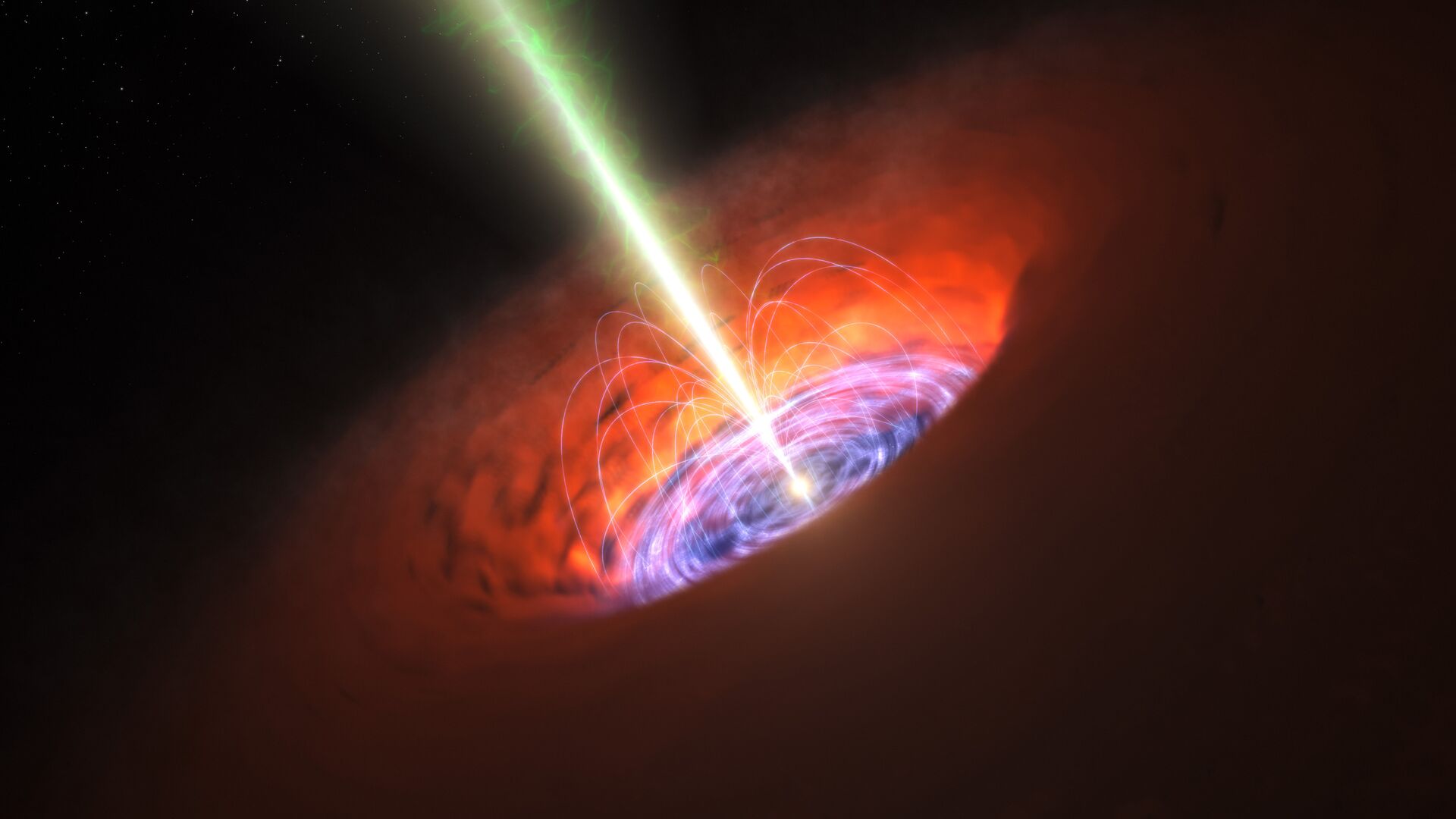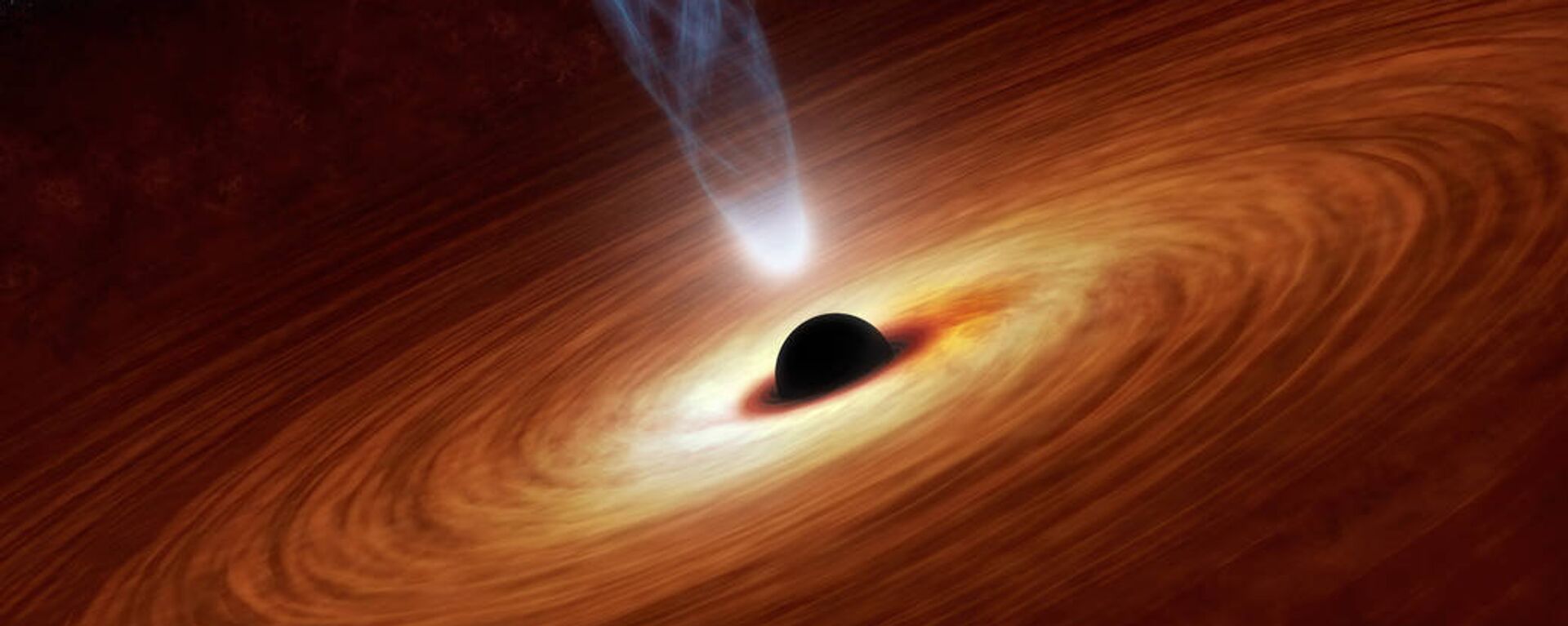https://sputnikglobe.com/20220305/keep-looking-theorised-black-hole-closest-to-earth-disproven-1093622716.html
Keep Looking: Theorised Black Hole Closest to Earth Disproven
Keep Looking: Theorised Black Hole Closest to Earth Disproven
Sputnik International
The Milky Way is littered with binary star systems, in which two suns are locked in a gravitational embrace — and any planets run a gauntlet between the pair... 05.03.2022, Sputnik International
2022-03-05T21:31+0000
2022-03-05T21:31+0000
2023-04-12T16:57+0000
black hole
technology
astrophysics
astronomy
chile
science & tech
space
https://cdn1.img.sputnikglobe.com/img/107390/35/1073903541_0:287:5000:3100_1920x0_80_0_0_07b6a7fdfdb41d8cc6b9df0e06c39eb6.jpg
Astronomers searching for the closest black hole to Earth will have to look further afield after one candidate — a mere 1,000 light-years away — drew a blank.Thomas Rivinius and his colleagues at the European Southern Observatory in Chile theorised in 2020 that binary star system HR 6819 in the constellation Telescopium, made up of two young blue giant stars, could contain a hidden black hole.The system appears as a single object, as the smaller, B-type star is outshone by its larger Be-type twin. But Rivinius observed that the B star appeared to oscillate over a 40-day period and deduced that it could have an unseen satellite of comparable mass in the form of a black hole. The degree of 'wobble' indicated an object around four times the Sun's mass.But other astrophysicists were skeptical and the group in Chile teamed up with those postulating counter-hypotheses.They found the two behemoth stars are just a third of an astronomical unit (AU) apart. One AU is the distance between the Earth and the sun, roughly 150 million km or 93 million miles.That relatively cheek-to-cheek proximity explained their very short mutual orbit of 40 days — less than half of that of Mercury, our solar system's innermost planet which orbits 58 million km from the sun, about the same distance apart as the two stars.The scientists now believe they have discovered a new kind of binary star system. The so-called Be star is known to have a disc of gas swirling out from its luminous sphere, previously put down simply to its high speed of rotation. But a new theory is that its gravity is dragging material away from its stellar twin.The team's paper is published in the March edition of the journal Astronomy & Astrophysics.
https://sputnikglobe.com/20220302/cosmic-drama-two-black-holes-doomed-to-crash-in-way-that-will-shake-time-and-space-study-says-1093525947.html
chile
Sputnik International
feedback@sputniknews.com
+74956456601
MIA „Rossiya Segodnya“
2022
James Tweedie
https://cdn1.img.sputnikglobe.com/img/07e4/08/1c/1080307270_0:3:397:400_100x100_80_0_0_7777393b9b18802f2e3c5eaa9cbcc612.png
James Tweedie
https://cdn1.img.sputnikglobe.com/img/07e4/08/1c/1080307270_0:3:397:400_100x100_80_0_0_7777393b9b18802f2e3c5eaa9cbcc612.png
News
en_EN
Sputnik International
feedback@sputniknews.com
+74956456601
MIA „Rossiya Segodnya“
Sputnik International
feedback@sputniknews.com
+74956456601
MIA „Rossiya Segodnya“
James Tweedie
https://cdn1.img.sputnikglobe.com/img/07e4/08/1c/1080307270_0:3:397:400_100x100_80_0_0_7777393b9b18802f2e3c5eaa9cbcc612.png
black hole, technology, astrophysics, astronomy, chile, science & tech, space
black hole, technology, astrophysics, astronomy, chile, science & tech, space
Keep Looking: Theorised Black Hole Closest to Earth Disproven
21:31 GMT 05.03.2022 (Updated: 16:57 GMT 12.04.2023) The Milky Way is littered with binary star systems, in which two suns are locked in a gravitational embrace — and any planets run a gauntlet between the pair. But astronomers believe they have found a new variety, with two giants stars almost cheek-to-cheek.
Astronomers searching for the
closest black hole to Earth will have to look further afield after one candidate — a mere 1,000 light-years away — drew a blank.
Thomas Rivinius and his colleagues at the European Southern Observatory in Chile theorised in 2020 that binary star system HR 6819 in the constellation Telescopium, made up of two young blue giant stars, could contain a hidden
black hole.
The system appears as a single object, as the smaller, B-type star is outshone by its larger Be-type twin. But Rivinius observed that the B star appeared to oscillate over a 40-day period and deduced that it could have an unseen satellite of comparable mass in the form of a black hole. The degree of 'wobble' indicated an object around four times the Sun's mass.
But other astrophysicists were skeptical and the group in Chile teamed up with those postulating counter-hypotheses.
They found the two behemoth stars are just a third of an astronomical unit (AU) apart. One AU is the distance between the Earth and the sun, roughly 150 million km or 93 million miles.
That relatively cheek-to-cheek proximity explained their very short mutual orbit of 40 days — less than half of that of Mercury, our
solar system's innermost planet which orbits 58 million km from the sun, about the same distance apart as the two stars.
The scientists now believe they have discovered a new kind of binary star system. The so-called Be star is known to have a disc of gas swirling out from its luminous sphere, previously put down simply to its high speed of rotation. But a new theory is that its gravity is dragging material away from its stellar twin.
The team's paper is published in the March edition of the journal
Astronomy & Astrophysics.



